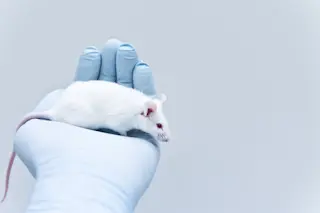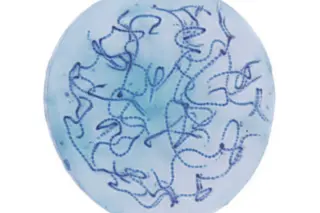Scientists at the University of Texas Southwestern Medical Center accidentally reprogrammed one type of mature neuron into another type of mature neuron, without having to revert the cells to a stem-cell state. Here, green indicates the cells that transformed. (Credit: Lei-Lei Wang/UT Southwestern) Sometimes, the best discoveries are the ones you make by accident. Molecular biologists at the University of Texas Southwestern Medical Center can attest to that: The team announced in a new paper in the journal Stem Cell Reports that they’d unintentionally reprogrammed one type of mature neuron into another — all without first reverting it to a stem-cell stage. As you might’ve guessed, yes, when scientists want to change a brain cell that’s already settled into its specialized role into one with another function, they usually need to roll back the developmental clock. Typically, that involves delivering proteins that help get them back into a stem-cell-like state. And this is just what the UT team had tried to do.
Gunning for Glia
Their original targets were glia, brain cells that make up about 90 percent of the brain and that carry out an array of essential functions, like insulating the signal-transmitting branches that sprout from a neuron’s center. They also happen to multiply more readily than neurons. The goal was, in mice, to home in on glia in the striatum, an area of the brain involved in controlling movement. The team wanted to switch the glia into neurons that would produce dopamine, a neurotransmitter also involved in movement (among other things). In disorders like Parkinson’s, dopamine-producing cells often die off as the disease progresses, leading to the hallmark symptoms of tremors and stiffness. Getting quick-to-multiply glia to convert and start producing dopamine could serve as a therapy to help treat Parkinson’s and other disorders involving the neurotransmitter. So the team came up with a collection of proteins that, ideally, would have reverted those glia to a stem-cell state, then spurred them into developing into dopamine-producing cells. They packaged these proteins into a vector — in this case a harmless virus — that was supposed to inject its bundle into the cells. Except that didn’t happen.
Happy Accident
When the team looked under the microscope, there sat the glia, unchanged. But to their surprise, another type of cell called medium spiny neurons (MSNs) had morphed instead. Normally, MSNs, which are common in the striatum, produce another neurotransmitter called GABA that helps control muscle movement. Now, they were pumping out dopamine. And after some chemical analysis, the group realized the MSNs had never reverted into any sort of stem-cell state — a phenomenon researchers thought was vital to such a transformation. "Initially, I was a little disappointed that we converted medium spiny neurons instead of glia," says Chun-Li Zhang, one of the UT researchers, in a press release. "But when we realized the novelty of our results, we were kind of amazed. To our knowledge, changing the phenotype of resident, already-mature neurons has never been accomplished before." There’s still the mystery of why the MSNs changed and not the glia, but this happy accident just showed there’s still a lot left for experts to uncover when it comes to neuroplasticity — our brain’s ability to change throughout our lives. “We hope that the ability to change neuron identity will someday be directed to treat neurological diseases, including Parkinson’s,” says Zhang.














